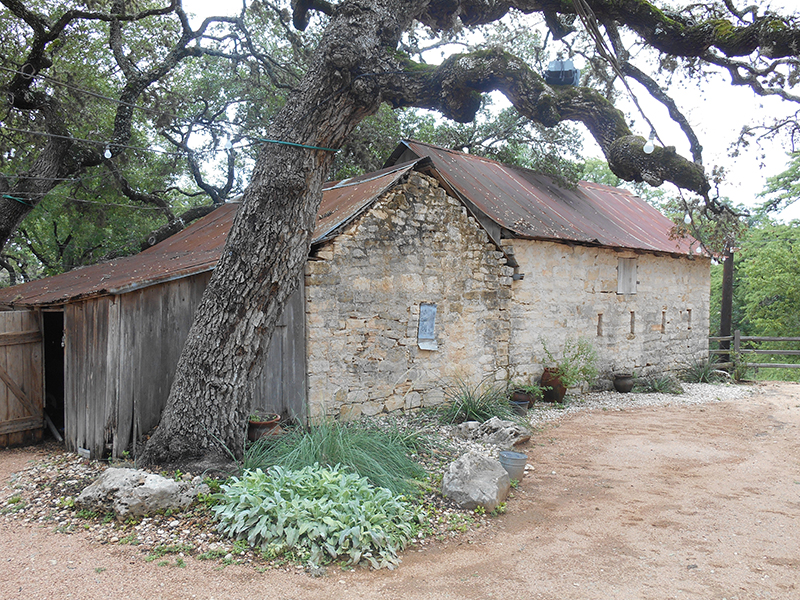German visitors to the Texas Hill Country are often surprised at the influence their homeland has had on this part of the Lone Star State. The depth of that influence is no accident but the result of a bold strategy to plant German colonies in Texas.
In 1842, a group of German noblemen organized The Adelsverein (the Society for the Protection of German Immigrants in Texas) to bring Germans to the Texas republic. The Adelsverein had philanthropic and commercial goals. Texas settlements would bring relief to the oppressed German working class and create new international markets for German goods. In 1844 the Adelsverein purchased colonizing rights to the Fisher/Miller Grant, a desolate and dangerous stretch of western Texas between the Llano and Colorado Rivers. German peasants, merchants and even some minor nobility packed up and set sail for a new home on the American frontier.
The first settlers reached Indianola on the Texas coast in December 1844 and began the difficult journey to the settlement area 250 miles to the northwest. Along the way the Adelsverein established the colony of New Braunfels on the Guadalupe River as a supply depot and waystation. John Meusebach, commissioner general of the Adelsverein in Texas, founded Fredericksburg as a stopover on the road between New Braunfels and planned settlements north of the Llano River.
Only a few Germans made it to the settlement zone in the Fisher/Miller lands, but Fredericksburg and New Braunfels thrived. They spawned other Hill Country communities, all connected by a German culture, but each with its own identity.
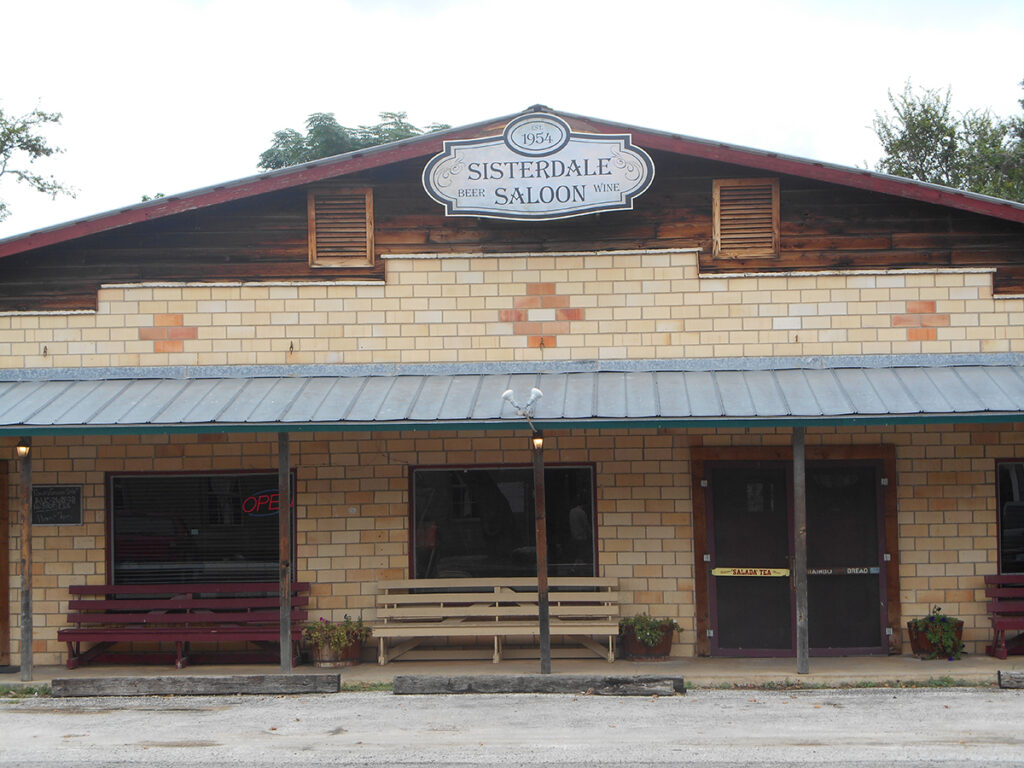

Albert – Gillespie County
The first Germans moved to Williams Creek after the Civil War. The Fredericksburg to Blanco stagecoach stopped there for fresh horses and to drop off the mail. People called the community Martinsburg after the postmaster. A few years later Minnie and Albert Luckenbach moved to Martinsburg from Luckenbach. According to legend, Minnie Luckenbach, who had already named the town of Luckenbach after her husband, used her considerable influence to rename the town of Albert after him as well.
Anhalt – Kendall County
Anhalt began as a rest area and waystation on the road between New Braunfels and Boerne. Anhalt is a German word that means “stopping place.” The local Germania Farmer Verein met regularly at Anhalt Hall, a wooden structure built in a live oak clearing. Around 1880 Anhalt Hall hosted its first Maifest (spring festival) and Erntefest (harvest festival). Those celebrations continue to this day. The current hall dates to 1908 and is still in regular use as a dancehall and meeting place.
Art – Mason County
One of the first settlements in Mason County, Art sprang to life when 5 German families moved to Willow Creek. J.A. Hoerster opened a general store there but sold the property to Otto Plehwe in 1885. Plehwe added a post office and renamed the town Plehweville. In 1920 the community changed its name to Art, Plehweville being difficult to pronounce, and because people kept confusing Plehweville with Pflugerville. Even the mail got mixed up. The name Art came from the last three letters of postmaster Eli Dechart’s last name.
Bergheim – Kendall County
In 1900, Andreas Engel built a store between New Braunfels and Boerne. Engel named the place Bergheim, German for “mountain home.” The store served as a gathering place and social hub for a wide area of the Hill Country between Boerne and Bulverde. The Germans who lived in the area would ride into Bergheim once a week, buy a load of groceries and pick up the mail. Cedar choppers in the Guadalupe River Valley traded cedar posts for groceries at the Bergheim store. For a time, Bergheim operated one of the largest cedar post yards in the state. The Engel family ran the store until 2018.
Boerne – Kendall County
In 1849, a group of German intellectuals founded a settlement on Cibolo Creek, northwest of San Antonio. They named the settlement Tusculum after the home of Cicero, Roman writer and orator. Three years later the residents of Tusculum changed the name to Boerne to honor German author Karl Ludwig Börne, the man many Germans credited with inspiring them to leave their homeland for America. Boerne became a haven for German immigrants seeking a new life in the United States.
Bulverde – Comal County
The Germans who first made a home in the hills north of San Antonio called their community Pieper after August Anton Pieper, the first homesteader in the area. When the postal service established a post office, officials named it Bulverde, probably after Luciano Bulverdo, another early settler. Anton Pieper lived into the 20th century. He helped build the dancehall at Anhalt. His wife died in 1884 from injuries suffered while carrying a sack of corn. Once in the middle of nowhere, Bulverde now sits just a few miles north of San Antonio’s busy Loop 1604.
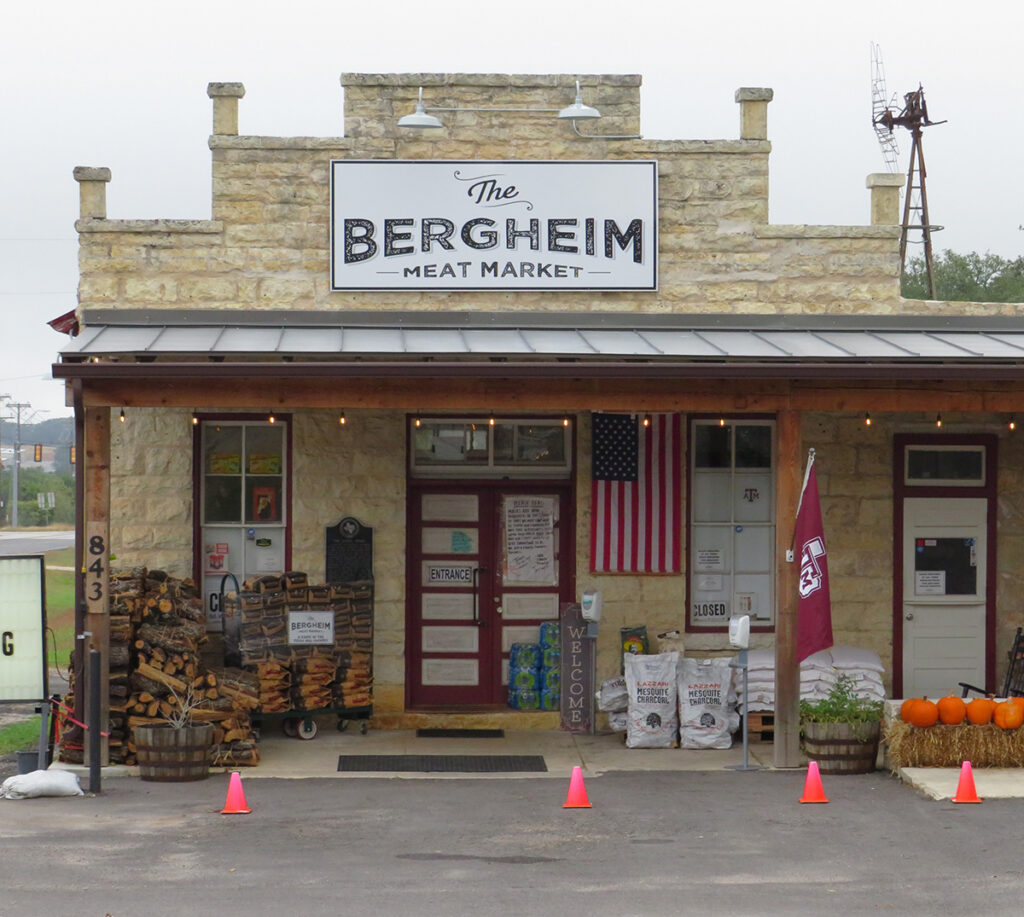
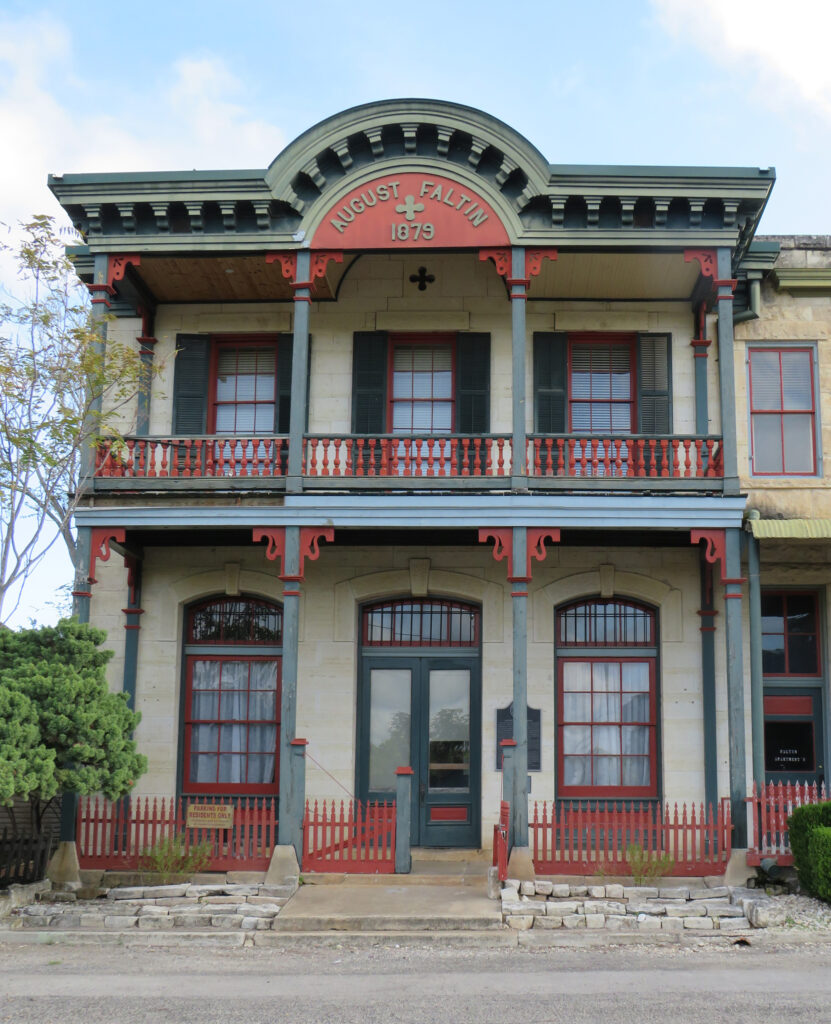
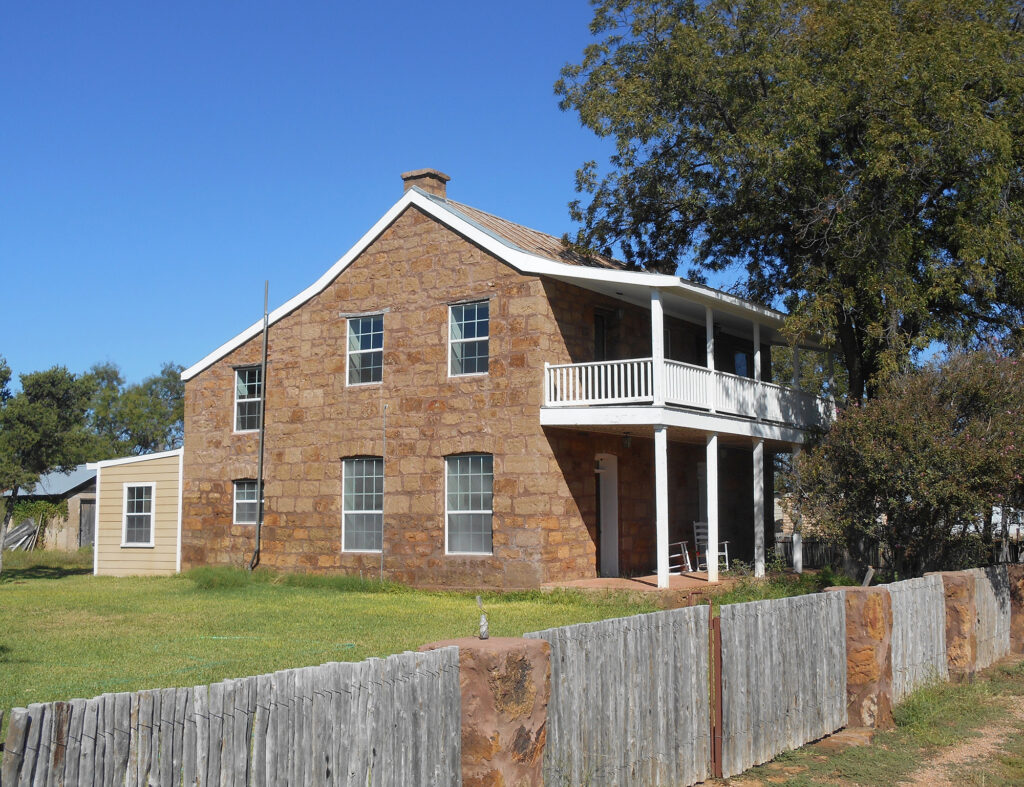
Castell, Bettina, Leningen, Schönburg, Meerholz – Llano County
German immigrants founded Castell in the Fisher/Miller lands on the north bank of the Llano River. It dates to 1847 and is the oldest surviving settlement in Llano County. Named for the business manager of the Adelsverein, Castell moved south of the river after a post office opened there in 1872. The general store, built in 1927 by the local blacksmith, still stands.
In 1847, a group of young, educated, idealistic German men established a Utopian commune near Castell. Infatuated with the Romanticism of German artist Bettina von Arnim, they named their community Bettina in her honor. Bettina, Sisterdale and several other German villages are sometimes called Latin colonies because their educated, urbane citizens frequently conversed in that language. The young men of Bettina brought along 24 wagonloads of personal baggage, most of it useless on the Texas frontier, including books of literature and philosophy, expensive musical instruments, exotic dogs and a large supply of whiskey. Some of the men worked to make Bettina successful. Others didn’t work at all. Plagued by anger, jealousy and hunger, the young men of Bettina drifted back to more established German colonies when supplies ran out. Some returned to Germany.
Little is known about the three German communities of Leningen, Schoenburg and Meerholz, founded at the same time as Castell and Bettina. Leningen had a short life. Schoenburg and Meerholz even shorter. Of the five German settlements clustered along the Llano River, only Castell survived. The others, populated mostly by young idealistic noblemen ill equipped for frontier life, never made it past a year.
Cherry Spring – Gillespie County
Germans from Fredericksburg first moved into the area called Cherry Spring in 1852. Former Indian captive Herman Lehmann operated a tavern there. By the 1940s, Cherry Spring Dancehall drew music lovers from four counties. Cited by the Texas Music Office as “one of the most historic dancehalls in the world,” Cherry Spring Dancehall hosted Lefty Frizzell, Bob Wills, Ray Price and a swivel-hipped Tupelo, Mississippi truck driver named Elvis Presley.
Comfort – Kendall County
In the early 1850s, a group of Germans from New Braunfels put down roots in the Hill Country 50 miles northwest of San Antonio. Over time the settlement developed a distinctive libertarian flavor that can be traced to the Freethinkers, a group of educated German liberals, intellectuals and political activists who came to Texas in the mid-19th century. By the 1860s, half the Freethinker population of Texas lived in Comfort, that little German village on Cypress Creek. Their strong feelings about liberty, equality and freedom had a profound and lasting impact on the area. Comfort, with its ornery streak of independence, remains unincorporated to this day. The town had no church until 1892. The Treue der Union Monument in Comfort honors Germans who fought and died for the Union in the Civil War. It is one of the few, perhaps the only monument to the Union in all of Texas.
Fischer – Comal County
Hermann Fischer from Germany settled on Geronimo Creek above Seguin. On the boat from Europe, he met a girl named Anna whose family moved on to Blanco. While traveling from Seguin to Blanco to see Anna, Fischer fell in love with the hills, the spectacular vistas, the crystal-clear streams and the stately cypress trees near the Devil’s Backbone. Fischer built a store and a saloon there. He agreed to be postmaster, reluctantly, and only because no one else would do it. Then postal inspectors told Fischer that regulations would not allow a post office in the same building with a saloon. The saloon would have to go. Hermann Fischer told the inspectors to find a new post office and postmaster. He then excused himself saying he needed to tap a beer barrel. After a quick meeting of postal officials, Fischer’s Store became the only post office in the country in the same building with a saloon.
Fredericksburg – Gillespie County
John Meusebach, returning to New Braunfels from an inspection tour of the German lands beyond the Llano River, looked down into a beautiful valley, encircled by seven hills with two flowing creeks. He chose the site for a waystation between New Braunfels, 60 miles east, and the German lands farther west. Meusebach named the settlement Fredericksburg after Prince Friedrich of Prussia. While few Fredericksburg Germans spoke Latin, they knew how to work. And only a few of them took advantage of the free land beyond the Llano River. When they saw Fredericksburg, they had no desire to go on.
Gruene – Comal County
In 1872, the Gruene family purchased 6,000 acres along the Guadalupe River. A few years later Henry Gruene built a store, a cotton gin, a dancehall and a saloon near the river amid the tall cypress trees. By 1900, the town of Gruene had become the banking, ginning and cotton shipping center for the area. Then the boll weevil got the cotton, and the new highway bypassed Gruene, leaving the town high and dry. Gruene almost died of neglect. The Renaissance began in the 1970s when artists, craftsmen and tourists rediscovered Gruene. The world famous Gruene Hall has hosted the greatest entertainers of our time, from Merle Haggard to Willie Nelson to George Strait.
Hedwig’s Hill – Mason County
Louis (Ludwig) Martin built a home and a store on a hill just north of the Llano River between Fredericksburg and Fort Mason. He named his home Hedwig’s Hill after his mother and daughter, both named Hedwig. In the 1870s, a cattle rusting epidemic with racial overtones led to the Mason County Hoo Doo War. Hedwig’s Hill got caught in the crossfire. When two Hoo Doo soldiers rode into town, Sheriff John Clark of Mason County waited on the porch at Martin’s store. As the soldiers approached, the sheriff, rifle in hand, threw a cartridge into the chamber, and the firing commenced.
Hilda- Mason County
Germans from Fredericksburg and New Braunfels built a settlement along Beaver Creek in 1855. Indian raids plagued the community in the early years. Gustave Schulze established the first post office in his store. Emma Schulze, the first postmaster, named the community Hilda after a relative.
Loyal Valley – Mason County
German immigrants from Fredericksburg moved into Loyal Valley in 1858. The name may be a proclamation of loyalty to the Union. John Meusebach, founder of Fredericksburg, moved there in 1869. Meusebach built a nursery to experiment with scrubs, fruit trees and grape vines. The stone ruins of his Roman bath house are still there. Loyal Valley made a go of it until the new Mason Highway went elsewhere.
Luckenbach – Gillespie County
Jacob and August Luckenbach settled on Grape Creek in the mid-19th century. Later William Engle opened the store and post office. The original building still stands. In 1971, Benno Engel sold the town of Luckenbach, lock, stock and beer barrel, to Hondo Crouch, Guich Koock and Kathy Morgan. Thanks to Hondo, Guich, Jerry Jeff Walker, Willie Nelson and Waylon Jennings, Luckenbach became a destination for cowboys, hippies and music lovers from around the world.
New Braunfels – Comal County
In March 1845, a wagon train of German immigrants, bound for the German lands beyond the Llano River, made camp 30 miles north of San Antonio near the confluence of the Guadalupe and Comal rivers. Some Germans moved on to Fredericksburg and the western lands, but many stayed in what came to be called New Braunfels. In the 20th century the Comal and Guadalupe Rivers helped make New Braunfels a major tourist destination. Wurstfest, a 10-day celebration of the German culture, attracts over 200,000 visitors to New Braunfels each year.
Sisterdale – Kendall County
Early settlers in Sisterdale included writers, scientists, artists, noblemen, freethinkers, radicals, anarchists, utopians, and revolutionaries (among them Karl Marx’s brother-in-law) exiled from the German states following the failed Revolution of 1848. They represented the most educated and enlightened people of their day. They listened to Mozart played on a piano in the library lined with classic literature. In the daylight hours they dodged Comanches. In the evenings, their lively dinner conversation, often in Latin, turned to Voltaire, Kant, Goethe, and Hegel. The scene had no parallel on the wild Texas frontier.
Twin Sisters – Blanco County
Named for a pair of prominent nearby hills, Twin Sisters become the center of German settlement in Blanco County. The town got a post office in 1856. Max Krueger built a dancehall and a bowling alley. By 1890, Twin Sisters had three stores, a gristmill, and a cotton gin. Then a drought hit. The population dropped. The post office and the businesses moved to Blanco. Only the dancehall still packs them in.
While the early Germans had a fondness for the Hill Country, they also founded or had a strong early presence in other Texas towns including Pflugerville, Bellville, Walburg, Muenster, Schulenburg, Brenham, Industry, New Ulm, Weimar and Cat Spring.
All the German communities of Texas still bear the mark of the original German settlers. They have a Bavarian flavor even a visitor from Germany will recognize.


